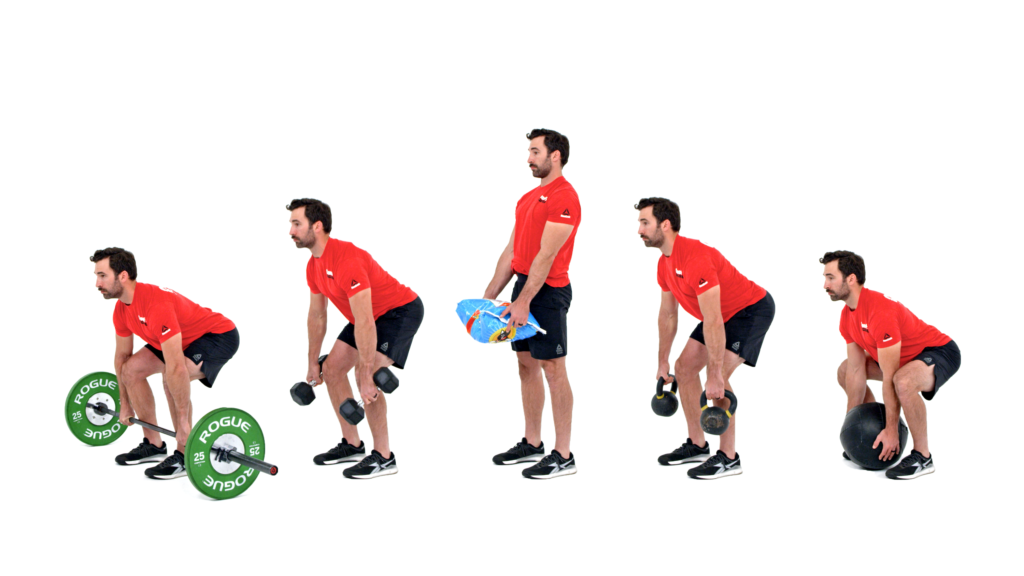The goal of CrossFit is to create a broad, general, and inclusive fitness: fitness with a general physical capacity that lends itself well to any and all contingencies; the likely and unlikely; the known, unknown, and unknowable. It is not enough to develop one capacity at the expense of any or all others. We do not just want you to be good in the gym or at one physical task; we want you to be good at life, sport, combat, and everywhere, at any time, for any duration, and in any environment. Achieving that requires variance.
We fail at the margins of our experience. This means that what, where, and how you train regularly determines your strengths but also develops the blueprint for your weaknesses. For example, if you only train low reps and heavy on certain days and cardio on others, you will find yourself at a distinct disadvantage when you pick up something heavy and run with it at the same time. Or, if you only ever stay in the 8- to 12-rep range, you will be at a disadvantage at anything outside that range. Or perhaps more relevant to CrossFitters, if you only ever train with a barbell, you will likely find any workout using dumbbells to be well outside your wheelhouse.
Since we are training for the unknown and unknowable (also known as life), we train in accordance with nature. Nature has no regard for the superficial distinctions we place on the physical tasks within a gym environment. Life outside the gym does not occur in expected set rep ranges or prescribed combinations of movements. If we do not train to vary as many factors as possible as often as possible, we will find ourselves woefully inadequate in the face of life’s challenges. Whether these challenges are excelling at sport, picking up a grandchild quickly to avoid danger, foisting a suitcase into the overhead bin, quickly getting up and over a fence because you’re being chased by an angry dog, or sprinting or buddy carrying to get help in an emergency, variance is the optimal strategy.
The primary factors of training that should vary regularly are those that influence intensity (force, distance, and time). This equates to load, duration of effort, distance/repetitions, and movements (including equipment). Varying these factors consistently will get you the greatest bang for your buck with regard to creating a solid foundation of general physical preparedness for whatever physical demands life puts before you, inside or outside the gym. Environmental factors are another aspect we can vary: elements such as time of day, temperature, amount of sleep, altitude, etc. It is important to note, however, that varying these factors can be lower priority for most people unless they are components of one’s job, life goals, or sport — i.e., first responders, mental toughness enthusiasts, or adventure athletes.
Environmental factors are another aspect we can vary: elements such as time of day, temperature, amount of sleep, altitude, etc. It is important to note, however, that varying these factors can be lower priority for most people unless they are components of one’s job, life goals, or sport — i.e., first responders, mental toughness enthusiasts, or adventure athletes.
In application, we creatively mix functional movements to create short, medium, and long workouts that can be executed at high intensity relative to the physical and psychological tolerances of an individual.
The trade-off for this breadth of fitness is the CrossFit athlete’s acceptance that they may never reach a level of capacity in a single domain that is reserved for the specialist. However, all physical pursuits require trade-off; the domain of the specialist is necessarily balanced on a precipice at the expense of capacity in other domains. The specialist’s strengths tower, but the drop-off to physical inadequacy is only a few steps in any direction.
For example, if we know an athlete is the best deadlifter on Earth, it’s no surprise that endurance and cardiovascular capacity have been sacrificed to make way for this incredible development of strength. Ask this athlete to enter a 5K “fun run” and their physical deficiency in this domain will be obvious. Conversely, the fastest marathon runner will sacrifice strength and flexibility in the pursuit of incredible stamina and endurance. Entering this athlete in an amateur weightlifting competition will highlight several clearly underdeveloped capacities.
In both of these examples, variety in training stimuli is consciously narrowed to produce a very specific adaptation. We recognize that true fitness is a compromise; excessive capacity in one area will blunt capacity elsewhere. Thus, to create a ready state that allows one to use capacity across a wide range of activities, CrossFit athletes choose a hybrid approach: specializing in having no specialty. Variance is a critical tool for the development of this breadth of physical capability.
We aim to ever expand our capacity and push out the margins of our experience by critically assessing the areas of least development and manipulating variables to challenge our weaknesses. We thus create greater, more well-rounded capacity. By repeating this process regularly, a broad, general, and inclusive fitness will be the reward.
For many, the rewards of a broad, general, and inclusive fitness are an increased quality of life: becoming a parent more capable of keeping up with your children, an adventurous athlete better suited to take on unfamiliar physical challenges, an aged person gaining confidence during the tasks of everyday life.
For some, the rewards of this fitness are experienced through increased competency in a profession or sport: the first responder entering a demanding situation with less physical trepidation or the athlete capable of displaying more skills late in the match. These athletes enjoy a ready state that lends them a distinct advantage over those who train exclusively for a singular, specific purpose.
Additional Reading
To learn more about human movement and the CrossFit methodology, visit CrossFit Training.